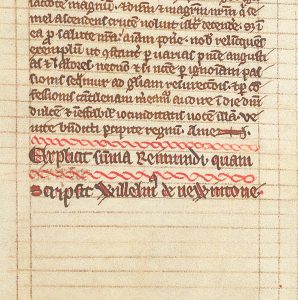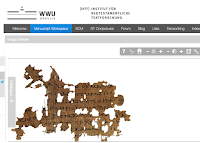Among text critics, it’s fairly well known that no Greek manuscript was ever produced to order for Erasmus that included the long form of 1 John 5.7. But given that the story is still found in the standard textbook and that it works as such a great illustration, it continues to be perpetuated among students of the New Testament. Here is the text of Metzger-Ehrman (p. 146):
 From Michael Maynard, A History of the Debate over 1 John 5,7–8: A Tracing of the Longevity of the Comma Johanneum, with Evalutations of Arguments Against Its Authenticity. Tempe, AZ: Comma Publications, 1995.
From Michael Maynard, A History of the Debate over 1 John 5,7–8: A Tracing of the Longevity of the Comma Johanneum, with Evalutations of Arguments Against Its Authenticity. Tempe, AZ: Comma Publications, 1995.
In an unguarded moment, Erasmus may have promised that he would insert the Comma Johanneum, as it is called, in future editions if a single Greek manuscript could be found that contained the passage. At length, such a copy was found—or was made to order! As it now appears, the Greek manuscript had probably been written in Oxford about 1520 by a Franciscan friar named Froy (or Roy), who took the disputed words from the Latin Vulgate.Thankfully, Metzger and Ehrman do cite the work of Henk J. de Jonge who found no such promise from Erasmus but did find a text that seems to have been misread as such. The story of the Comma from the time of the printing press is now told in a remarkably detailed account by one of de Jonge’s students. It’s worth thinking about why this particular canard appeals to us so much. Why are we so easily taken by it? In any case, here is a letter from de Jonge to Michael Maynard on the matter:
 From Michael Maynard, A History of the Debate over 1 John 5,7–8: A Tracing of the Longevity of the Comma Johanneum, with Evalutations of Arguments Against Its Authenticity. Tempe, AZ: Comma Publications, 1995.
From Michael Maynard, A History of the Debate over 1 John 5,7–8: A Tracing of the Longevity of the Comma Johanneum, with Evalutations of Arguments Against Its Authenticity. Tempe, AZ: Comma Publications, 1995.











